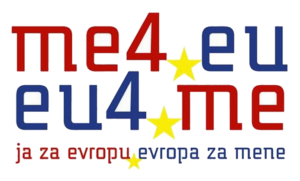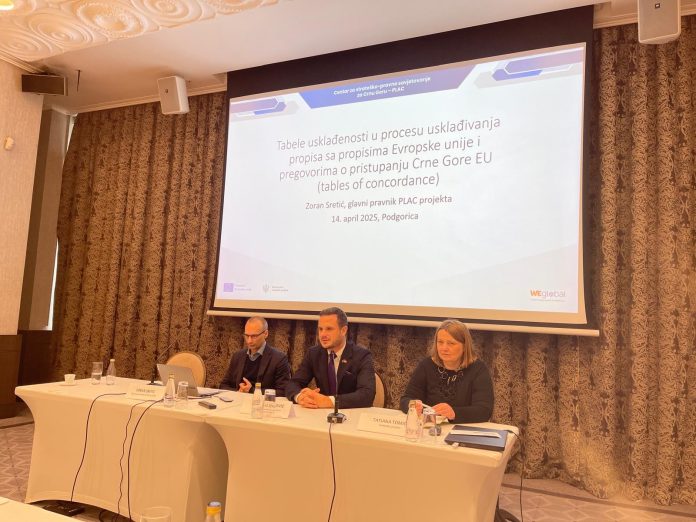“Alignment tables are one of the most important instruments in the process of harmonizing national legislation with the EU acquis, particularly in the context of reporting to the European Commission on the fulfilment of obligations under the negotiation process and the closing benchmarks for each chapter,” said Chief Negotiator Predrag Zenović at a workshop organized by the Ministry of European Affairs and the PLAC Project (Center for Strategic Legal Counseling for Montenegro), with the support of the EU Delegation to Montenegro. The topic of the workshop was the role of alignment tables in taking on membership obligations and conducting accession negotiations with the European Union.
Zoran Sretić, Chief Legal Expert of the PLAC Project, spoke about the concept, purpose, and method of using alignment tables as a key tool for determining the transposition status, monitoring the harmonization of national legislation with EU secondary law (directives, regulations, and decisions), and verifying the accuracy of its transposition into Montenegro’s legal system.
During the workshop, the function of alignment tables was explained in various phases of drafting national legislation that transposes EU provisions, in accordance with the Guidelines for Planning and Drafting Legislation Harmonized with the EU Acquis of the Ministry of European Affairs. This includes the stage of submitting draft legislation to the European Commission at a more mature phase, as well as the stage of submitting the final version of the legislation after its adoption.
The workshop gathered representatives from key institutions and ministries, including the Directorate for Harmonization of Legislation with the EU Acquis and the Directorate for Preparation of the Montenegrin Version of the EU Acquis. Through joint discussions and analysis of concrete examples from negotiation chapters, specific proposals were formulated to improve the methodology for drafting and the practical application of alignment tables.


